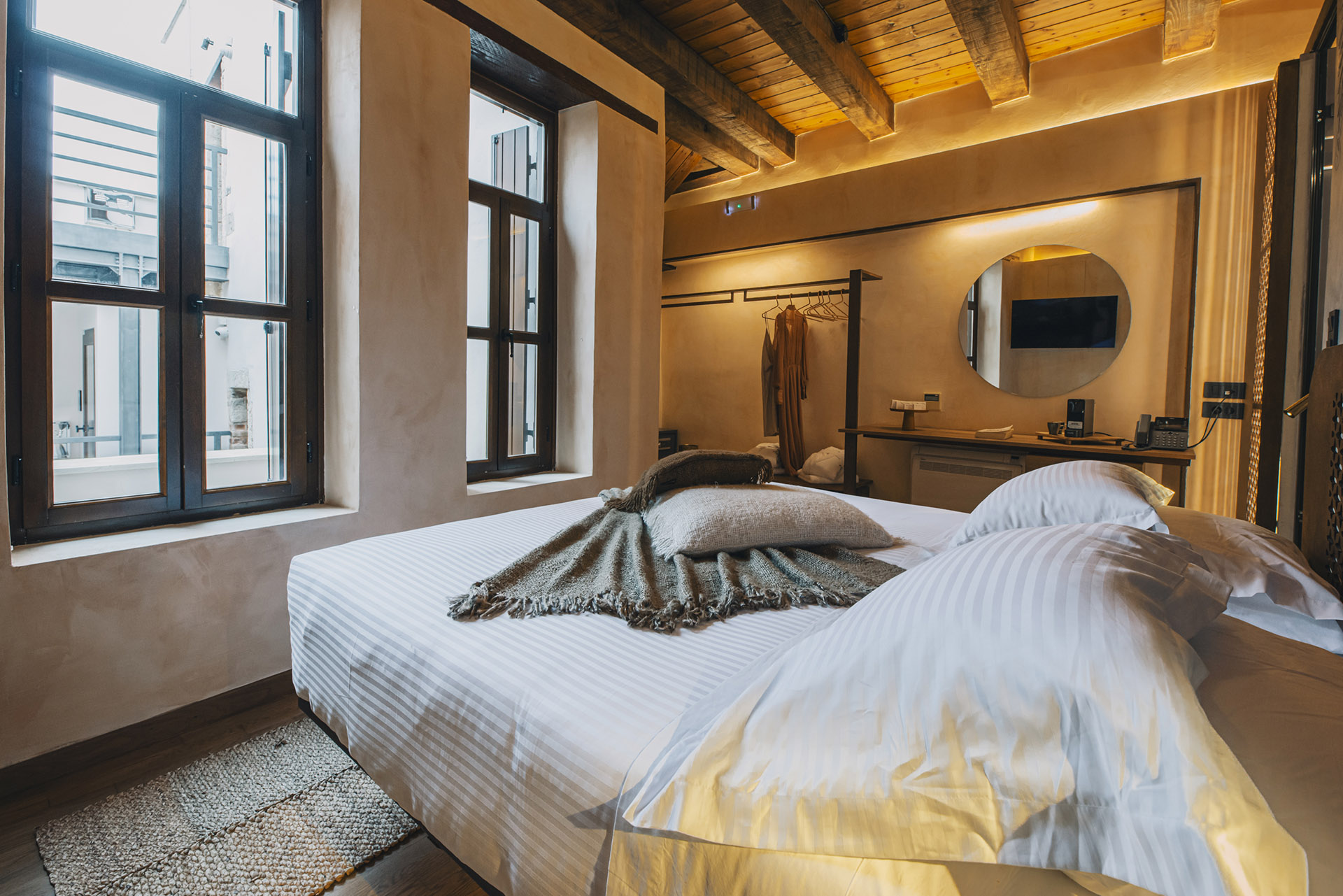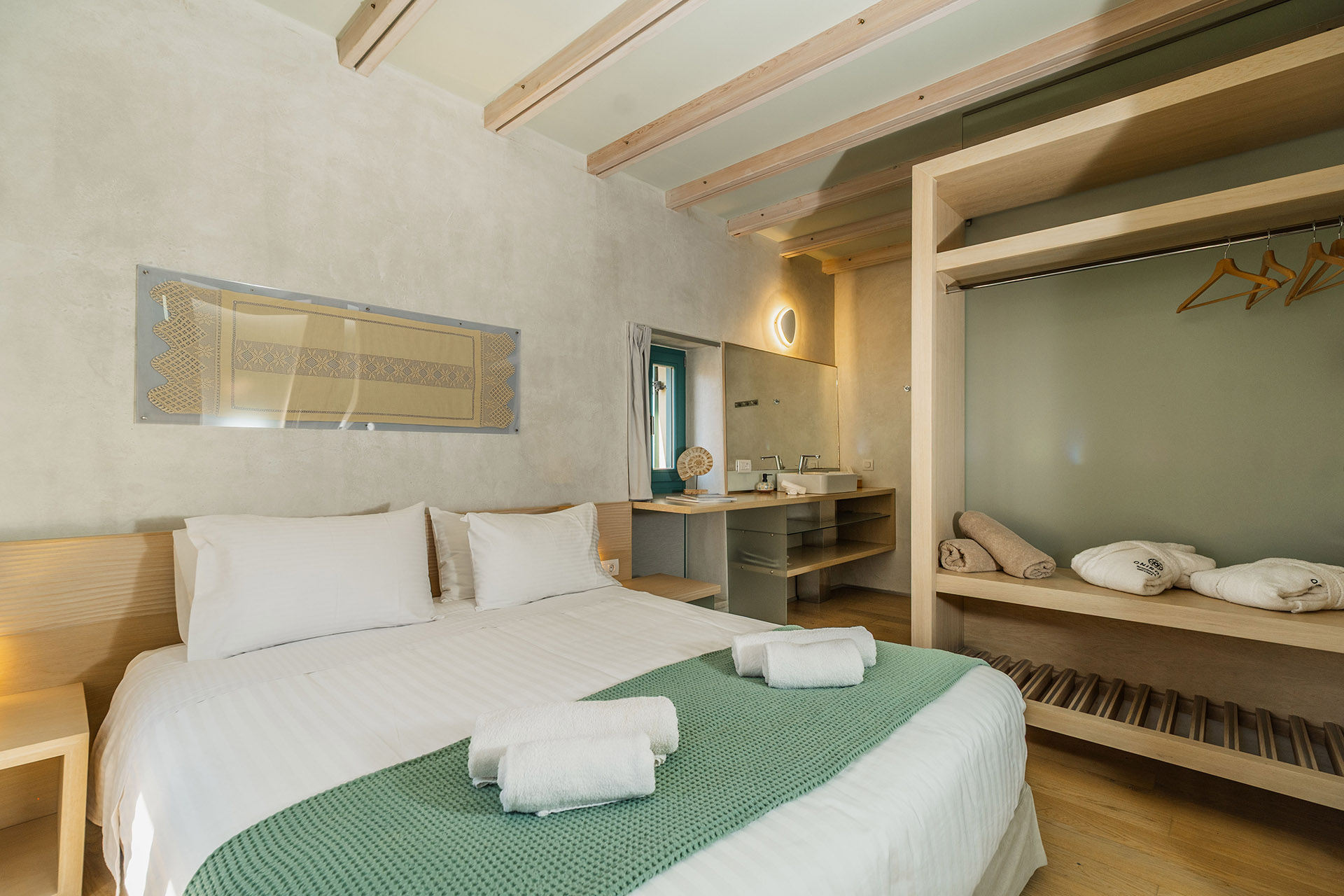IN THE HEART OF CHANIA
Oniros Residenza Vecchia Arethusa is located in the heart of Splantzia, on Episkopou Nikiforou Street, within Chania’s Old Town, just a few meters from the Venetian Harbor. The historic neighborhood, with its picturesque alleys and traditional shops, is the ideal location for exploration and leisurely strolls. Just a three-minute walk away, in a quiet historic alley of the Old Town, lies Oniros Residenza Vecchia Panaretos on Kallinikou Sarpaki Street. It is the perfect choice for those seeking a comfortable stay near the atmospheric Splantzia Square.
Oniros Residenza Vecchia Arethusa is located in the heart of Splantzia, on Episkopou Nikiforou Street, within Chania’s Old Town, just a few meters from the Venetian Harbor. The historic neighborhood, with its picturesque alleys and traditional shops, is the ideal location for exploration and leisurely strolls. Just a three-minute walk away, in a quiet historic alley of the Old Town, lies Oniros Residenza Vecchia Panaretos on Kallinikou Sarpaki Street. It is the perfect choice for those seeking a comfortable stay near the atmospheric Splantzia Square.
SPLANTZIA: A HISTORIC NEIGHBORHOOD IN CHANIA
Splantzia is one of Chania’s most historic districts, preserving its unique identity through centuries of history. Since the Venetian era, it has been a lively center of activity, with the Church of Agios Nikolaos standing out. Built in 1320, it has undergone multiple transformations, reflecting Crete’s multicultural past. Originally a Dominican monastery, it was later converted into an Ottoman mosque with the addition of a minaret, before becoming an Orthodox church. Today, it symbolizes the coexistence of different cultures and religions. The modern-day 1821 Square is the heart of Splantzia, where large plane trees provide shade, and the surrounding cafés and tavernas blend tradition with a relaxed ambiance.
WHAT TO DO IN SPLANTZIA?
Visit the Church of Agios Nikolaos to discover its multicultural history and admire its architecture. Wander through the traditional shops on Sifaka Street, where you can find handmade knives engraved with Cretan mantinades, a true part of Crete’s artistic heritage. Finally, relax under the natural shade of the plane tree in 1821 Square, enjoying a Greek coffee or a glass of raki in one of the local cafés.
VENETIAN HARBOR
The Venetian Harbor is one of Chania’s most iconic landmarks, home to monuments such as the Firkas Fortress, the Grand Arsenal shipyards, the Etz Hayyim Synagogue, the Yali Mosque, and the Egyptian Lighthouse, all testifying to the city’s rich history. Stroll along the waterfront promenade, admire the architecture of the Venetian buildings, and visit the local restaurants and tavernas to savor Cretan cuisine. You can also enjoy a coffee or a drink in one of the many waterfront cafés and bars while taking in the breathtaking view of the harbor.
WHY CHOOSE US?
Oniros Residenza Vecchia Arethusa offers two distinct accommodation options: the Junior Suite and the Junior Suite With Terrace, in the heart of Chania’s Old Town. Housed in a building of historical architectural significance, it combines traditional charm with modern comforts and is within walking distance of the Venetian Harbor, providing an atmosphere steeped in the city’s history. Oniros Residenza Vecchia Panaretos is located in a historic three-story building in the "Platia Rouga" neighborhood of Splantzia, an ideal base for exploring the Old Town. Both locations, Oniros Residenza Vecchia Arethusa & Panaretos, seamlessly blend the past’s unique history with contemporary amenities, offering the perfect setting to experience Chania’s architectural and culinary delights. A truly unforgettable stay.
DISTANCES
- 13,3 km from Chania International Airport
- 7,7 km from Souda Port
- 700 m from Old Venetian Harbor of Chania
- 900 m from Koum Kapi Beach
- 53 km from Balos Beach
- 69,7 kmfrom Elafonissi Beach
SERVICE
& CONCIERGE
Service and Concierge include guided Walks & Tours, Breakfast from our menu, Full fridge Service (upon request), Car & Van Rentals, transfers, Massage Therapies and more services.
©2022 ONIROS GROUP. All Rights Reserved. Privacy Policy. --> Website by Inglelandi Digital Agency




